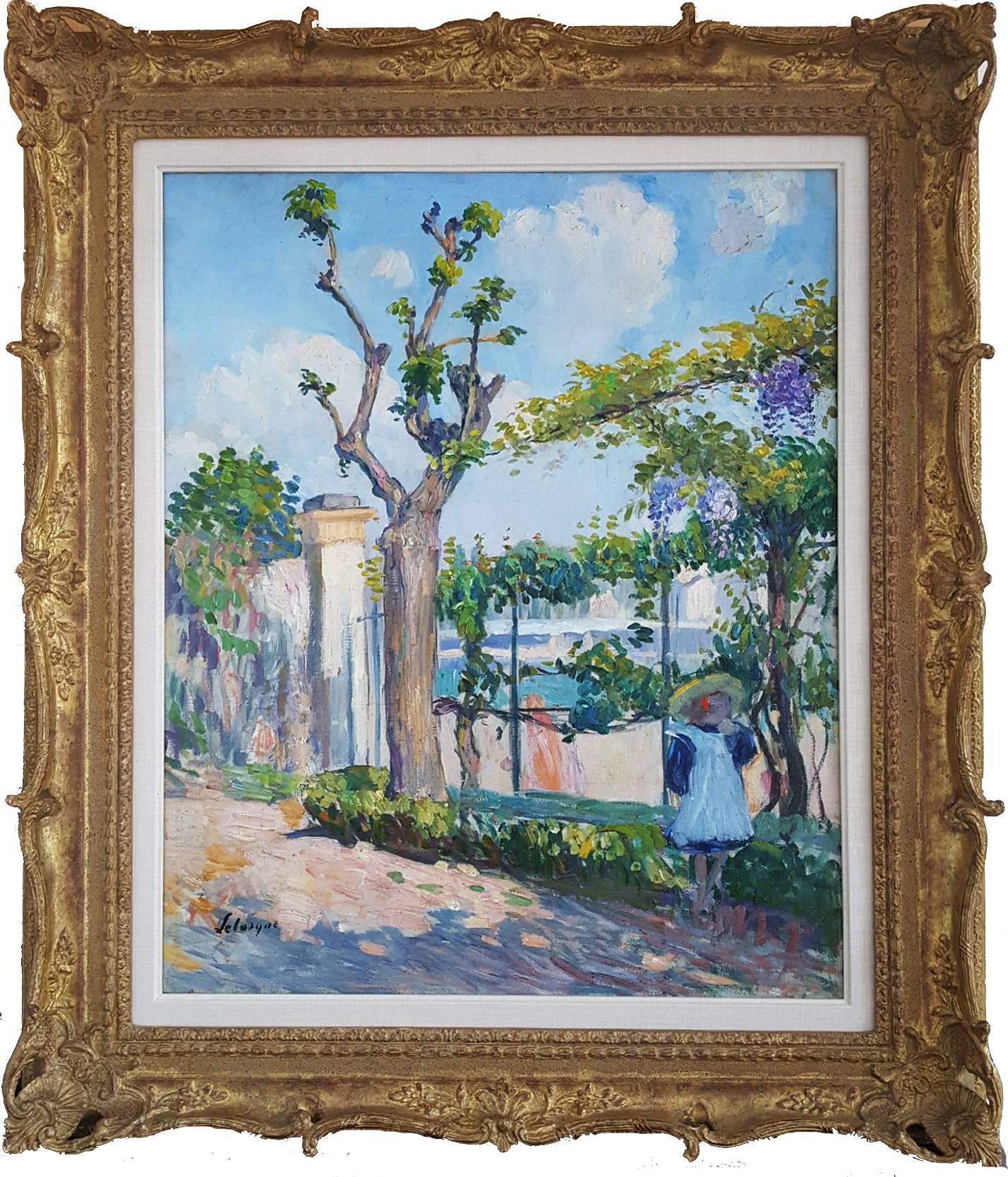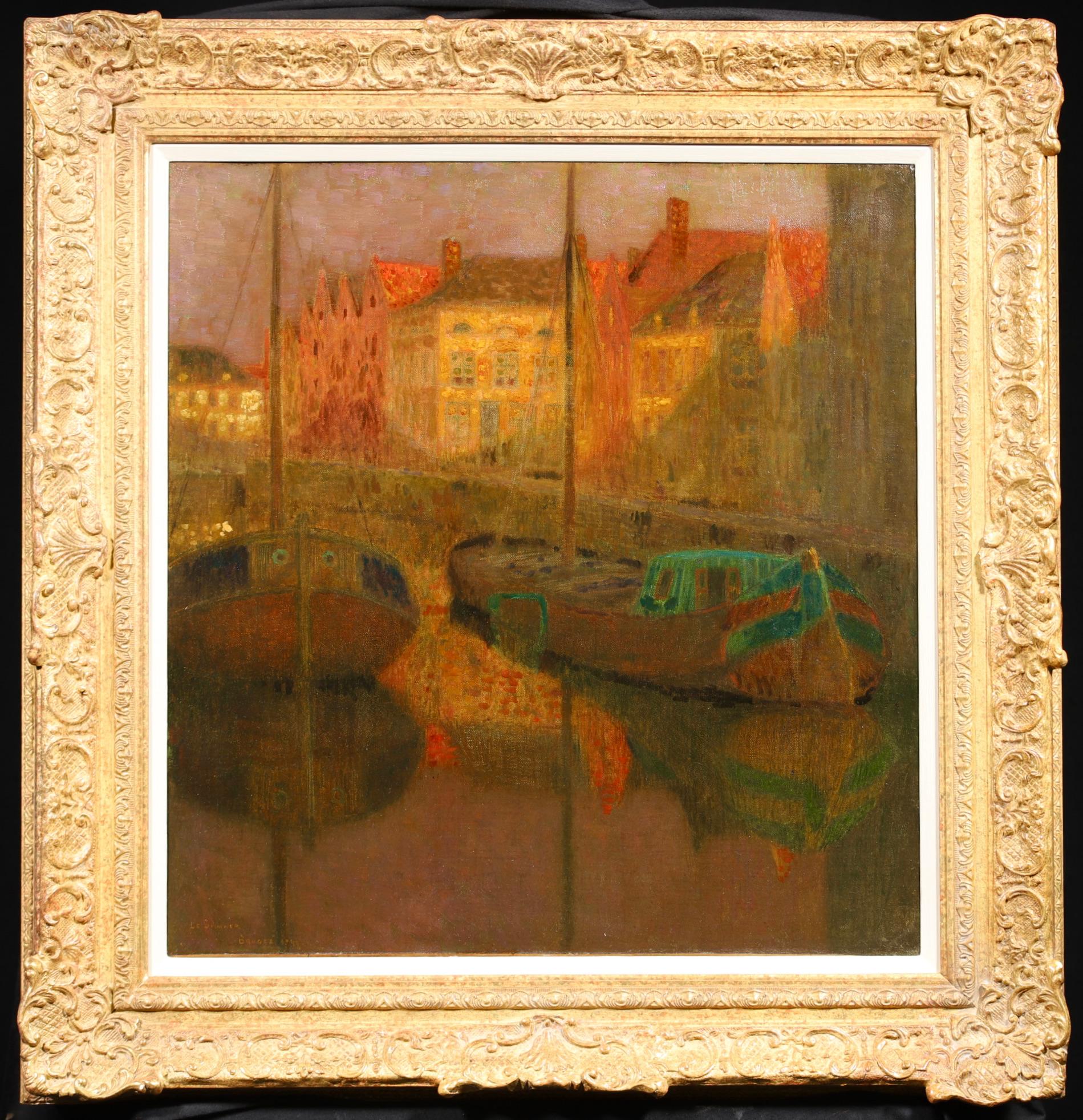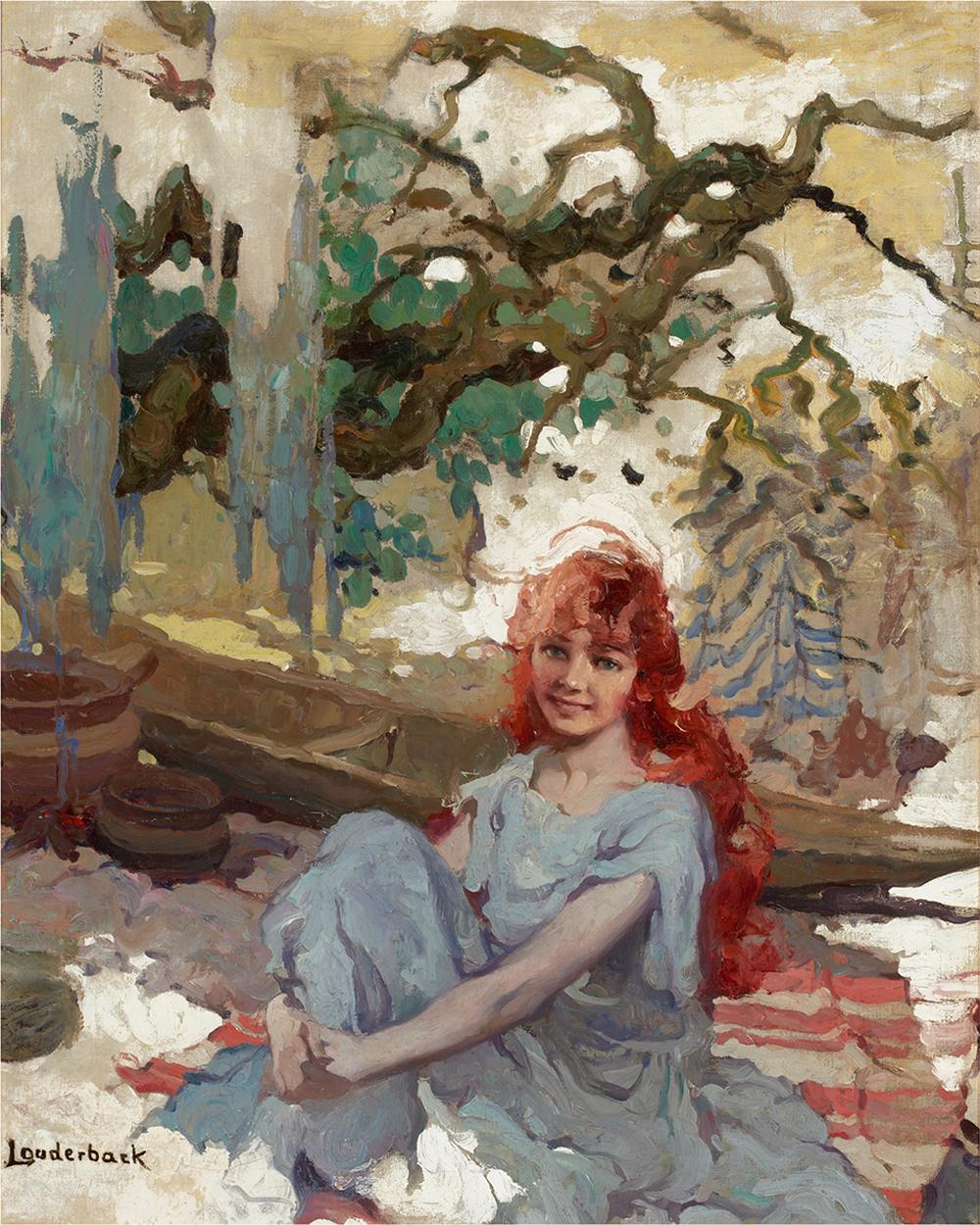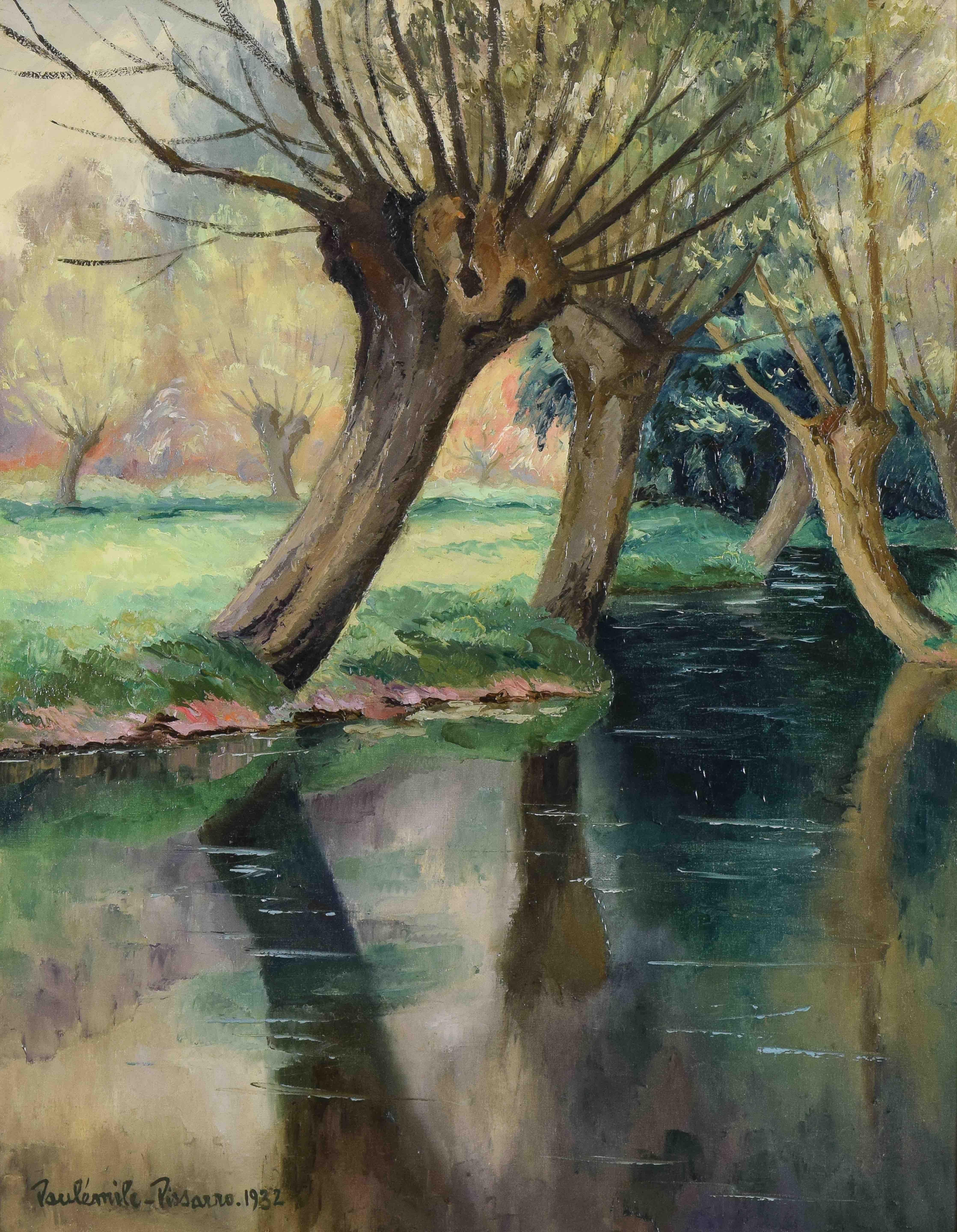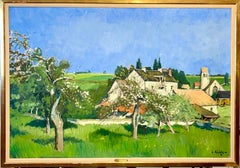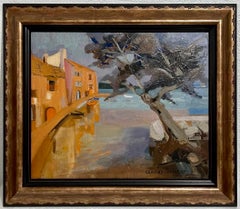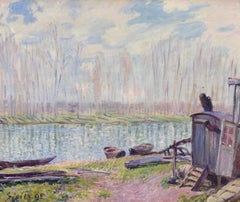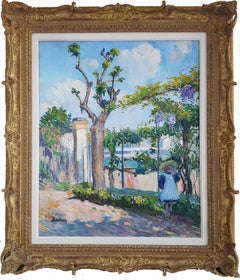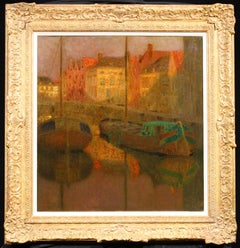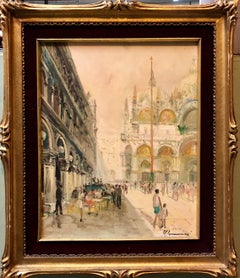
View of San Marco Piazza, Venezia Italian Oil Painting
View Similar Items
Want more images or videos?
Request additional images or videos from the seller
1 of 9
Angiolo TommasiView of San Marco Piazza, Venezia Italian Oil Painting
About the Item
- Creator:Angiolo Tommasi (1858 - 1923, Italian)
- Dimensions:Height: 27 in (68.58 cm)Width: 23 in (58.42 cm)
- Medium:
- Movement & Style:
- Period:
- Condition:frame has minor wear.
- Gallery Location:Surfside, FL
- Reference Number:1stDibs: LU3822562121
About the Seller
4.9
Platinum Seller
These expertly vetted sellers are 1stDibs' most experienced sellers and are rated highest by our customers.
Established in 1995
1stDibs seller since 2014
1,549 sales on 1stDibs
Typical response time: 1 hour
More From This SellerView All
- Large French Oil Painting Paris, Seine River w Bridge, Landscape, Lucien DelarueBy Lucien DelarueLocated in Surfside, FLLucien Delarue (1925-2011) Paris Seine River Scene. "Seine at Paris" Provenance: Newman Gallery, Phila. Label verso. Hand signed on Canvas. Dimensions: H: 25 inches: W: 31.5 inches: Frame: 35 X 41 inches Artist Lucien Delarue was born in Paris in 1925, and he is known for his spectacular cityscape painting. Post Impressionist painter He studied at the studios of Grande Chaumiere, Paris and was a pupil of Maitre Yves Brayer. He is best know as a French Impressionist. He loved to paint the romantic streets of Paris with its stunning architecture and beauty. Also included in his repertoire is colorful French floral still life paintings, South of France country cottages, harbor views, and river scenes. At a very early age Delarue began taking part in exhibitions. Quickly he was talking medals for his works including first prize and the Vermeil-Medaille at the Salon Violet. Other gold medals include the Salon of Vincennes, and the Salon of Clichy (1973). In 1974 he won the silver medal at the Salon des Artistes Francais, and a bronze medal at the "Arts-Sciences-Lettres" exhibition in Paris. He also exhibited works at the Museum of Ile de France in the chateau of Sceaux. He held exhibitions in New York and in San Francisco in the United States. He was a member of the Salon des Artistes Francais and of the French Watercolor Society.Lucien Delarue excelled in recreating the cottages, harbor views, and expressionist architecture of Paris in his artwork. His watercolor paintings include color-rich representations of France's many scenic rivers. Delarue would eventually become a member of the French Watercolor Society and the Salon des Artistes Francais. He showed with Henk Bos...Category
Mid-20th Century Post-Impressionist Landscape Paintings
MaterialsCanvas, Oil
- Large Modernist Fauvist Oil Painting Constantin Kluge French Countryside BloomsBy Constantine KlugeLocated in Surfside, FLConstantine Kluge (French 1912-2003) Les Pommiers en Fleurs Oil on canvas of apple trees in bloom Hand signed lower right. Provenance: purchased from Wally Findlay Galleries. (bear...Category
1960s Post-Impressionist Figurative Paintings
MaterialsCanvas, Oil
- French Harbor Oil Painting Ecole Paris George Lambert Houses on the WaterBy Georges LambertLocated in Surfside, FLGeorges Lambert (French, 1919-1998) Homes Along the Water, Oil on canvas, hand signed lower right, Dimensions: overall (with frame): 24.5"h x 28"w (canvas measures about 18 X 21) Georges Lambert: A twentieth century French painter, illustrator and lithographer of landscapes, seascapes and figure studies, was born in Paris in 1919, he died in 1998, and was a member of the Academie de la grande Chaumiere (Kurt Seligmann, Yolande Ardissone, Balthus, Jacques Bouyssou, Gabriel Dauchot, Étienne Hajdu, Jean Helleu, Claude...Category
Mid-20th Century Post-Impressionist Landscape Paintings
MaterialsCanvas, Oil
- Judaica Meditative Rabbi at Prayer in Nature, Large Landscape Oil PaintingBy Donald Roy PurdyLocated in Surfside, FLGenre: Modern Subject: Jewish Elder , Judaic Prayer Surface: Board Country: United States signed lower left Donald Roy Purdy is an American painter whose work evolved through a rang...Category
20th Century Fauvist Figurative Paintings
MaterialsOil, Board
- French Riviera Harbor Scene Oil Painting Ecole D'Paris, WPA, Bezalel ArtistBy Jacques ZuckerLocated in Surfside, FLGenre: Post Impressionist Subject: Landscape Medium: Oil Surface: board Country: France Dimensions: 13" x 16" Jacques Zucker was born in 1900 in Radom, Poland. He was a notably famous Jewish American artist mostly known for his expressionist figure paintings. In his young years he traveled to Palestine to study fine arts at the Bezalel Art School in Jerusalem. In 1917 he joined the British Royal Fuesiliers under the leadership of General Allenby to liberate Palestine from the Turks. After the first World War he settled in Paris, where he continued his studies at Académie Julian and Academie Colarossi. He then emigrated to the United States in 1922 and continued his art studies at the National Academy of Design. He supported himself by designing jewelry. In 1925 he returned to Paris and studied at the Academie de la Grande Chaumier et Colarossi. During the Depression he worked for the WPA. From 1928 he took part in the Paris Salons: Autumn and the Tuileries. His works are expressionistic variations in the type of the Ecole de Paris. As a protégé of both Chaim Soutine and Renoir, hints of their style can be observed in much of his own work. Zucker’s style, that may have been influenced from the art of artists such as Marc Chagall, took pride in being an “internationalist”, standing the art of painting in its highest expression is universal no matter where the canvas was created. People who respond to quality in art will understand the beauty and meaning, in their own land or in a foreign land, this was his main idea behind his artworks that was exhibited in numerous solo show in leading galleries and museums in New York, Paris, Tel Aviv, and other art centers. Claude Roger-Marx of Figaro Litteraire, dean of French art critics, write a comprehensive study of Zucker’s illustrated with 135 color and black and white plates. He traveled widely, including Italy, Spain, Portugal, Mexico and Israel. From then on Zucker lived alternately in New York and Paris, maintaining homes in both places, and spent considerable time painting in Mexico, Portugal, Greece, and Israel. Zucker's post-impressionist works including town and landscapes, still-lives, and portraits, are part of an array of permanent installments in numerous museums and private collections in Tel Aviv, including the Joseph Hirschorn collection in Washington, D. C., the Museum of Modern Art in Paris, and the Bezalel Art Museum in Jerusalem. In 1947 he settled in Arcueil near Paris. Zucker died in 1981 in New York. The School of Paris, Ecole de Paris, was not a single art movement or institution, but refers to the importance of Paris as a center of Western art in the early decades of the 20th century. Between 1900 and 1940 the city drew artists from all over the world and became a centre for artistic activity. School of Paris was used to describe this loose community, particularly of non-French artists, centered in the cafes, salons and shared workspaces and galleries of Montparnasse. Before World War I, a group of expatriates in Paris created art in the styles of Post-Impressionism, Cubism and Fauvism. The group included artists like Pablo Picasso, Marc Chagall, Amedeo Modigliani and Piet Mondrian. Associated French artists included Pierre Bonnard, Henri Matisse, Jean Metzinger and Albert Gleizes. The term "School of Paris" was used in 1925 by André Warnod to refer to the many foreign-born artists who had migrated to Paris. The term soon gained currency, often as a derogatory label by critics who saw the foreign artists—many of whom were Jewish—as a threat to the purity of French art. Art critic Louis Vauxcelles, noted for coining the terms "Fauvism" and "Cubism", Waldemar George, himself a French Jew, in 1931 lamented that the School of Paris name "allows any artist to pretend he is French. it refers to French tradition but instead annihilates it. The artists working in Paris between World War I and World War II experimented with various styles including Cubism, Orphism, Surrealism and Dada. Foreign and French artists working in Paris included Jean Arp, Joan Miro, Constantin Brancusi, Raoul Dufy, Tsuguharu Foujita, artists from Belarus like Michel Kikoine, Pinchus Kremegne, and Jacques Lipchitz, the Polish artist Marek Szwarc and others such as Russian-born prince Alexis Arapoff. A significant subset, the Jewish artists, came to be known as the Jewish School of Paris or the School of Montparnasse. The core members were almost all Jews, and the resentment expressed toward them by French critics in the 1930s was unquestionably fueled by anti-Semitism. Jewish members of the group included Emmanuel Mané-Katz, Chaim Soutine, Adolphe Féder, Chagall, Moïse Kisling, Maxa Nordau and Shimshon Holzman...Category
Mid-20th Century Post-Impressionist Landscape Paintings
MaterialsBoard, Oil
- French Fauvist Post Impressionist Beach Scene, Umbrellas Jean Sardi Oil PaintingLocated in Surfside, FLJean Sardi, French (b. 1947). "Beach Scene" Signed Lower Right Framed 16 x 19. image 11 x 14 Jean Sardi is a French Post War & Contemporary painter who wa...Category
20th Century Post-Impressionist Figurative Paintings
MaterialsOil, Board
You May Also Like
- Bords du Loing by Alfred Sisley - Oil, landscape paintingBy Alfred SisleyLocated in London, GB*THIS PRICE INCLUDES 5% IMPORT DUTY APPLICABLE IF THE WORK REMAINS IN THE UK ONLY. Bords du Loing by Alfred Sisley (1839-1899) Oil on canvas 46.1 x 55.7 cm (18¹/₈ x 21⁷/₈ inches) S...Category
1890s Post-Impressionist Landscape Paintings
MaterialsCanvas, Oil
- Le Jardin de Lagny - Garden with young girl Post-impressionistBy Henri LebasqueLocated in Miami, FLLe Jardin de Lagny Provenance: Arthur Tooth, London Radon Gallery, NY This beautiful evocation of a lyrical French landscape is a fine example of of Po...Category
Early 1900s Post-Impressionist Landscape Paintings
MaterialsOil, Canvas
- Barques de Peche - Post Impressionist Landscape Oil by Henri Le SidanerBy Henri Le SidanerLocated in Marlow, BuckinghamshireSigned post impressionist landscape oil on canvas by French painter Henri Le Sidaner. This stunning piece depicts two fishing boats moored in a fishing village at sunset. The last l...Category
1890s Post-Impressionist Landscape Paintings
MaterialsOil, Canvas
- Girl with canoe painted in Arts and Crafts styleBy Walt LouderbackLocated in Miami, FLSigned lower left. Most likely for Saturday Evening Post or Colliers. Louderback is a painter/illustrator of the Golden Age of Illustration...Category
1920s Post-Impressionist Figurative Paintings
MaterialsCanvas, Oil
- Haystack with Resting FiguresBy John Maclauchlan MilneLocated in Hillsborough, NCScottish artist John Maclauchlan Milne, RSA, (1885-1957) is a contemporary of Scottish Colourists Peploe, Fergusson, Cadell and Hunter. Like the...Category
1920s Post-Impressionist Landscape Paintings
MaterialsCanvas, Oil
- Henri-André Martin, Les Baux de Provence, Oil on Canvas, 1961By Henri-André MartinLocated in Saint Amans des cots, FROil on canvas by Henri-André Martin (1918-2004), France, ca.1980s. Les Baux de Provence. With frame: 71x98 cm - 28x38.6 inches. Without frame: 65x92cm - 25.6x36.2 inches. 30P format. Signed lower right "Henri A Martin" (see photo). Located and dated 1961 on the back (see photo). Can be matched to make a pair with another painting by Henri-André Martin that we offer on 1stdibs whose title is "Henri-André Martin Olive Tree Field in the Alpilles, Provence, Oil on Canvas". Born in Lyon in 1918, the child and the adolescent Henri-André Martin spent his youth in Saint-Étienne, his father, Edme Martin, first installed as a practicing doctor in Lyon, having been appointed doctor of the anti-tuberculosis dispensaries of the Loire. During his first years of studying medicine in Lyon, he nevertheless enrolled in the Beaux-Arts. Appointed hospital intern upon his return from captivity in 1942, he ended his medical career as director of the otolaryngology university clinic at Édouard-Herriot hospital. But painting was his passion. Painting was for Henri-André Martin the way of expressing his feelings. By nature very reserved and of an extreme modesty that many took for coldness, it was what allowed him to express his strong artistic sensitivity and, his pictorial periods are as many reflects of his anxieties, of his hopes, of his joys. At every period of his life, wherever he goes and whenever he has a moment, he paints gouaches, often of small size, but sometimes of larger size. He also paints beaches that have been compared to those of Boudin. Their invoice shows, however, that this figure is only appearance and that in fact, these beaches made of water, sky and sand, readily dispense with the motif, the work of the material seeming to have more importance. as the subject. Despite the fact that until the 1970s he painted "on the ground", his canvases remain far removed from the anecdote. Often harsh like the landscapes of Provence, the Parisian walls which express concern, or the railways, the switch tracks which suggest, in ocher and black, all the embarrassment of choice. We find the same nostalgic gravity in the canvases of the carcasses of boats which, as his friend Louis Pons later wrote, "seem to die of immobility" or in the canvases of Venice, or the landscapes of Eygalières. In the following years, his painting became simpler, more synthetic, such as these landscapes with tortured almond trees, black and gnarled olive trees, plane trees standing out against the ocher sky of the dawn of Provence, in winter. These are also the canvases of Hamburg in the dough becomes heavier, the colors darken, marking all the gravity of the port landscapes. Workshop work gradually takes precedence over motif painting. The pivotal period coincides with that of his work on the olive tree, during which he leads the realization of the "Trunks", a collection of six lithographic plates, of the book L'olivier comprising many lithographs and serigraphs, but also texts. poetic and numerous paintings. He then became passionate about everything related to the olive tree (literature, painting, traditions, history), but also to the tree itself, its thousand-year-old history, its poetry, its symbols, but also its culture, its size. oil production...Category
1960s Post-Impressionist Figurative Paintings
MaterialsCanvas, Oil

